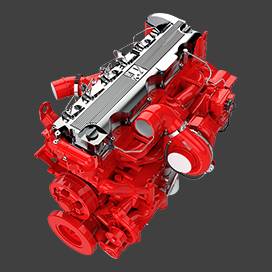nov . 15, 2024 08:09 Back to list
brake drums and rotors
Understanding Brake Drums and Rotors Essential Components of Vehicle Safety
Braking systems are a crucial aspect of vehicle safety, ensuring that drivers can slow down or stop their vehicles efficiently. Among the key components of these systems are brake drums and rotors. Understanding their functions, differences, and maintenance is vital for any vehicle owner who seeks to ensure reliable performance and safety on the road.
What are Brake Drums and Rotors?
Brake drums and rotors serve as the primary components in two different types of braking systems drum brakes and disc brakes
.Brake Drums Brake drums are typically found in older vehicles or some light trucks. They are cylindrical components that house brake shoes, which press against the inner surface of the drum to create friction. When the brake pedal is engaged, hydraulic pressure pushes the brake shoes outward against the drum, effectively slowing down or stopping the vehicle. One of the disadvantages of drum brakes is that they can be less efficient in dissipating heat, leading to brake fade during prolonged use.
Brake Rotors On the other hand, brake rotors are part of disc brake systems, which are more commonly used in modern vehicles. Rotors are flat, circular discs that rotate with the wheels. When the brakes are applied, brake pads clamp down on the rotor, creating friction that slows down the wheel. This design allows for better heat dissipation, leading to improved performance under heavy braking conditions.
Differences Between Brake Drums and Rotors
While both drum brakes and disc brakes serve the same fundamental purpose—slowing or stopping the vehicle—there are significant differences between them in terms of design, performance, and maintenance.
1. Heat Dissipation As mentioned earlier, brake rotors provide superior heat dissipation due to their design. This allows them to perform well under high-stress situations, such as when driving on steep declines or during rapid stops, reducing the likelihood of brake fade.
brake drums and rotors

2. Weight and Size Brake drums tend to be heavier and bulkier, which can add unnecessary weight to a vehicle, impacting fuel efficiency. In contrast, brake rotors are generally lighter and more compact, contributing to a vehicle's overall performance.
3. Maintenance and Repair Drum brakes can be more challenging to maintain and repair compared to disc brakes. The drum assembly is usually enclosed, making it more difficult to access and inspect the components. Rotors, however, are more accessible, allowing for easier inspection of wear and tear. Moreover, replacing brake pads is often simpler with a disc brake system.
4. Cost In terms of cost, drum brake systems are generally less expensive to manufacture and install, which is why they are still used in some budget vehicles. However, the performance benefits and lower maintenance costs of disc brakes often justify the upfront expense in the long run.
Importance of Maintenance
Both brake drums and rotors require regular maintenance to ensure optimal performance and safety. For drum brakes, it’s essential to periodically inspect the brake shoes for wear and to clean the drum’s inner surface to prevent debris buildup that may hinder performance.
For rotor systems, checking the thickness of the rotors is crucial. If they become too thin, the effectiveness of braking can diminish, leading to dangerous situations. Additionally, warped rotors can cause vibrations during braking, signaling the need for immediate inspection and potential replacement.
Conclusion
In summary, brake drums and rotors are essential components of a vehicle's braking system, each playing a vital role in ensuring safety on the road. While brake drums are commonly found in older models, the more modern and efficient disc brake systems featuring rotors are predominant in today’s vehicles. Understanding the differences, maintenance needs, and signs of wear for these components can greatly contribute to vehicle safety and performance. As a vehicle owner, staying informed and proactive about your braking system can help prevent accidents and enhance your driving experience. Always consult with a trusted mechanic for maintenance recommendations tailored to your specific vehicle type.
-
Your Brake Drum Man: Quality & Performance Parts
NewsAug.21,2025
-
Explore Japan: Ultimate Travel Guide & Authentic Experiences
NewsAug.19,2025
-
Your Brake Drum Man: Premium & Reliable Brake Drums for Sale
NewsAug.18,2025
-
ROR Web Development: Build Fast, Scalable, Secure Apps
NewsAug.17,2025
-
Scania Brake Drums: OEM Quality for Optimal Safety & Durability
NewsAug.16,2025
-
R.V.I: Advanced Remote Visual Inspection for Precision
NewsAug.15,2025
